- Back to Home »
- Photographer chronicles weight loss

Matthew Mullins began his weight loss journey after the doctor told him he needed high blood pressure medication. He was 32 years old.
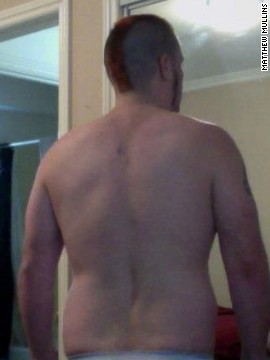
Mullins cut out sugar and started cooking at home. By fall 2012, he had also cut out fast food and added more color to his plate with a variety of vegetables. The strict diet helped him feel better, and he started to see a difference in the mirror as well.
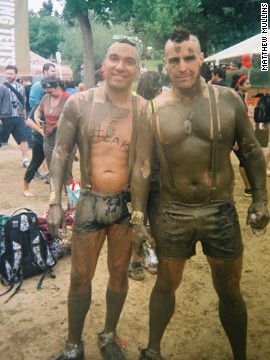
Mullins added running to his exercise regimen and recruited his friends to join him in fun races for charity.
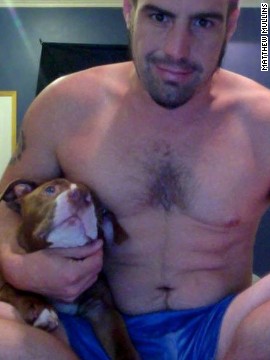
By summer, Mullins was running about seven miles a day. Sometimes his dog joins him.
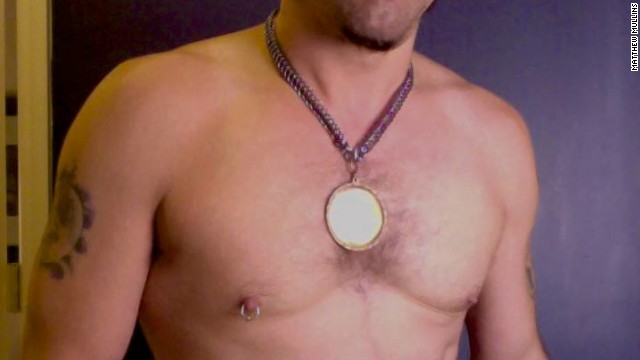 Mullins also joined exercise boot camps and went for long bike rides.
Mullins also joined exercise boot camps and went for long bike rides. 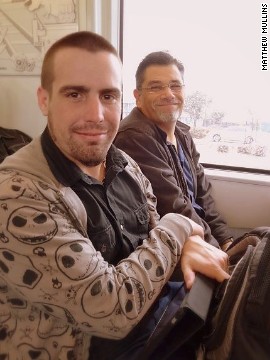
Mullins says he feels great, and his new size has given him more confidence.
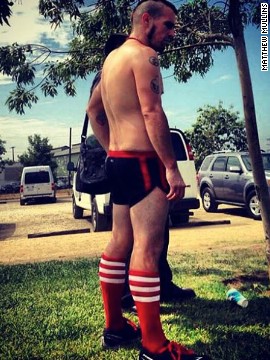
Mullins goes around without a shirt so much, his friends ask when, if ever, he will put it back on.
 Overall, Mullins has lost about 40 pounds. He continues to lose fat while building muscle.
Overall, Mullins has lost about 40 pounds. He continues to lose fat while building muscle. - Matthew Mullins had an "aha" moment when doctors put him on blood pressure medication
- Mullins has lost more than 40 pounds and is still losing
- He says he's noticed a huge difference in how guys approach him now
- Mullins is gay; studies show gay men struggle more with body image than straight men
Editor's note: Do you have a weight-loss success story to share? Tell us how you did it and you could be featured on CNN.com.
(CNN) -- Matthew Mullins used to regularly show up late to yoga class on purpose.
"That way I could be in the very back of the class where no one would watch me," Mullins said. "At 206 pounds, being only 5-10, I felt like I really looked stupid."
Last year, when the California photographer and part-time college student went in for his regular checkup, he got troubling news. The doctor told him he was in the beginning stage of hypertension and wanted to put Mullins on blood pressure medication. Mullins was only 32 years old.
"I didn't want to end up sick," he said. "My mom died at the age of 42 after struggling with obesity and high blood pressure. I knew she wouldn't want me to go down this path."
As a gay man, Mullins said being overweight also made it hard to meet people. Studies show gay men struggle more with body image than straight men and are more likely to end up with eating disorders to meet an ideal standard that is hard for many to achieve.
"If you are overweight in our community, you become invisible, and I just hate that about us," Mullins said. "Out at a bar or party guys would talk to me sometimes, but when I lost the weight the conversation took on a really different tone. ... It's not right to exclude people because they are overweight, but that's the reality."
His doctor did put him on a high blood pressure drug, but Mullins said he didn't like the way it made him feel.
Instead, he decided to make a radical change to the way he lived.
He started by downloading an app called Loseit!, an interactive calorie counter program.
"It's awesome -- you can scan any bar code you have on food in the house, and it helps you keep track of what you are eating," Mullins said.
Tracking calories and fat became a game. He tried to see how much sugar he could eliminate from his diet. Advice from a professor to diversify the food he ate made him put more color on his plate.
"My family was very Irish, and we were more into potatoes and bread and meat," Mullins said. "Now I try to avoid all that white."
He eliminated fast food. He cooked more at home. Desserts were gone; green vegetables were in. Breakfast was yogurt or rice pudding, because he found the carbohydrates helped with energy. Lunch was soup that was heavy on vegetables or a sandwich with lean meat. Dinner was a chicken breast and rice that he cooked himself.
Keeping a strict diet helped him quickly see a difference. He lost about two pounds a week. When he was down 20 pounds, he decided it was time to start running. He started small and gradually built up his run over time, going from one mile to seven.
"It really was not fun at first," Mullins said. "It was hilarious how hard it was running just a mile. I felt like it was 10. But gradually it got easier."
He also joined an exercise boot camp offered on campus. He kept up with yoga and then added regular exercise to his everyday activities.
He couldn't afford to join a gym, but that was OK -- "If I'm watching TV, I push the table aside and pull out my exercise ball or lift weights," Mullins said.
He knows many people complain that they don't have time to exercise. He does get busy working and going to school, but he said that is no excuse.
"I can do 3½ miles in 25 minutes now running," Mullins said. "Anyone could find 25 minutes in their day to exercise."
He also enlisted his friends to hold him accountable. Together they downloaded a Nike app that lets you monitor how much friends work out. That kind of friendly competition keeps him motivated, he said. Plus, friends will call him with words of encouragement if he ever slacks off.
He and his friends got so into exercise they created a group called Hashtag Run. Together they have tackled local 5K's to raise money for a variety of charities, including autism. One day they hope to do a long AIDS fundraising bike ride that stretches over hundreds of miles.
A photographer, Mullins also started taking photos of himself so he could watch his progress. "Those photos certainly keep me honest and motivated," he said.
Now at 165 pounds and still losing, Mullins walks around shirtless so much he says his friends teasingly ask when he'll put his shirt back on. And yes, he gets hit on when he goes out.
"I've got so much more confidence and energy, and the best part is I'm so much more comfortable with myself," Mullins said. "I'm 33 years old and now I feel like I could live for at least 30 more. I didn't really feel like that before."
"What I've learned from all of this is you've got to figure out what will make you go out and do it," Mullins said. "Trust me, I didn't want to run when it was freezing in December. But having friends invested in your success and, maybe even more important, doing it for yourself ... it all really does help."







